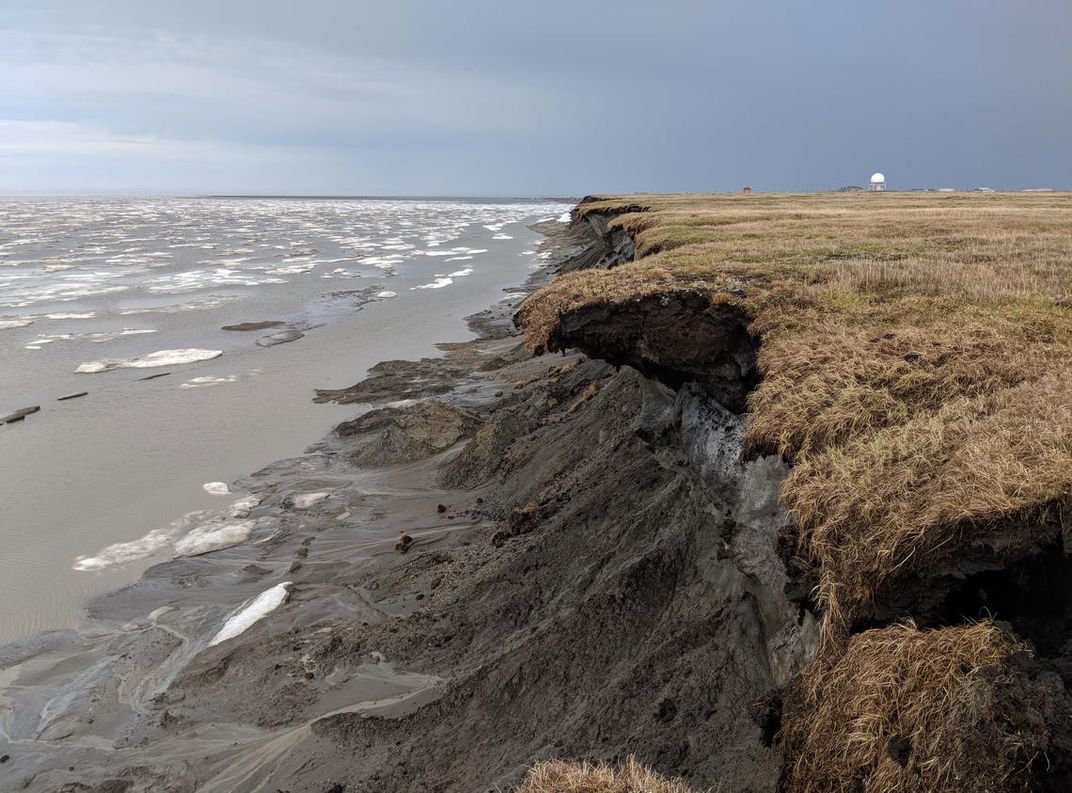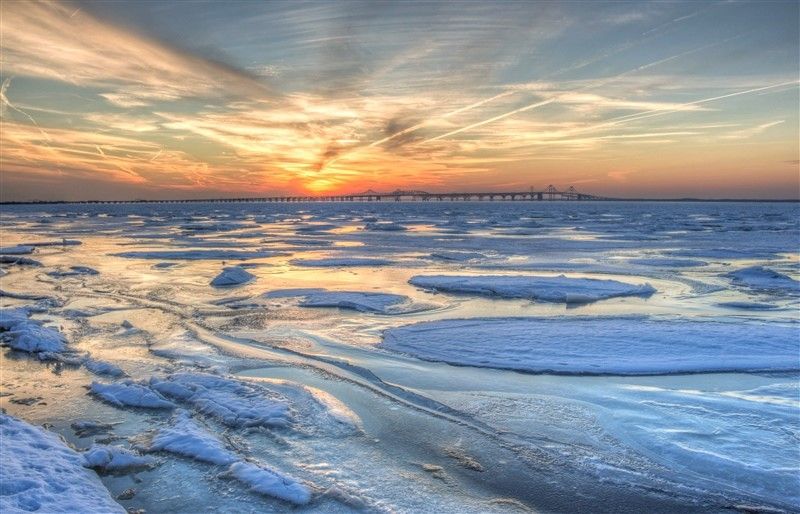NATIONAL MUSEUM OF NATURAL HISTORY
Climate Change Redefines What ‘Normal’ Means in the Arctic
As Earth’s climate changes, people around the world are witnessing insidious changes and responding to their new normal.
/https://tf-cmsv2-smithsonianmag-media.s3.amazonaws.com/blogging/featured/Ice_sheets_cover_Arctic_waters_on_a_sunny_day.jpg)
June has entered the scene with trips to the beach, picnics and heat waves. For those in the Arctic Circle, memories of winter take longer to fade — especially after a year that saw more sea ice than the previous. However, although this year was colder for the Arctic in general, it was still on average warmer than others in the region's history.
“This supposedly very cold year only brought the ice to an average level. That’s the message,” said Igor Krupnik, an anthropologist and Arctic ethnographer at the Smithsonian’s National Museum of Natural History. “The new normal is that your very cold winter of today was a very average winter of yesterday.”
Understanding the “new normal” takes more than statistics. It needs human perspectives, because people are the best recordkeepers of their lived experiences. That's why anthropologists like Krupnik work together with local communities to document the ongoing changes and challenges they’re facing.
“The complexity of climate change is usually being measured by physical processes and all kinds of indicators of system processes, but there’s also human processes,” said Krupnik. “With people, you will always get something different and new. Insects and birds don’t speak back. People do.”
Humanizing the change
People have lived in the Arctic for over 30,000 years, leaving behind oral histories and tangible settlements that anthropologists and archaeologists study to learn more about the region. In the mid-20th century, scientists’ focus began to include climate change in the Arctic. By the late 1990s, Indigenous activists caught on. The Arctic became an example of environmental upheaval that would soon happen elsewhere

“In the United States, it started with the discussion of the thawing permafrost in Alaskan ice cellars when the Inupiat people in the northern city Utqiagvik could not keep their whale meat frozen for the entire season,” said Krupnik. “It was the most unusual element of climate change you could imagine.”
But soon, the symbol of thawing ice freezers lost its potency. Climate change was accelerating everywhere and the discussion reverted to scientific abstraction. To rehumanize Arctic climate change, the narrative first transformed into one of dying culture and traditions.
“You want action, and you want respect. So, if scientists are talking about big climate cycles, you learn you have to come up with much stronger indicators of what’s happening,” said Krupnik. “That’s where the idea that where Arctic culture is dying comes forward.”
Increasing changes, increasing uncertainty
Today, the Arctic has become almost synonymous with villages flooding from sea level rise, scarce local food and permafrost thaw. But there’s harm in those generalizations, because they don’t hold room for nuance.
“There is actually no single way for how people in the Arctic are experiencing climate change, because every community is experiencing something very different,” said Krupnik.
Nuance is what Krupnik and other ethnographers — anthropologists who collaborate with Indigenous experts to record their perspectives — specialize in. For the past 25 years, he has been partnering with the Yupik communities on St. Lawrence Island, a spot west of Nome, Alaska in the northern Bering Sea, to hear their firsthand experiences of climate change. While scientists tend to show climate change as an increasing trend, locals witness it differently.
“It’s not a linear process to them. It’s a change that becomes the new normal and then another slight change and then you live with it,” said Krupnik.
Adjusting globally

As Earth’s climate changes, people around the world are witnessing insidious changes and responding to their new normal. For example, the changes that are happening in the Arctic are also happening right next door. The Chesapeake Bay used to be often frozen solid in the winter in the past century.
“In the old days, there used to be ice in the Chesapeake Bay that blocked heavy storms,” said Krupnik. “The last time it happened was in winter 1976 to 1977, but it has not since.”
There were once many inhabited islands on the Chesapeake where people lived by commercial fisheries. These low-lying islands, like Smith Island in Maryland, are being eroded by rising sea levels. While watching their new normal evolve, their inhabitants may have felt similarly to Arctic communities.
“The main message is uncertainty, which — I would say — is the message of climate change in general,” said Krupnik. “Everywhere people are uncertain.”
Evolving Climate: The Smithsonian is so much more than its world-renowned exhibits and artifacts. It is an organization dedicated to understanding how the past informs the present and future. Once a week, we will show you how the National Museum of Natural History’s seven scientific research departments take lessons from past climate change and apply them to the 21st century and beyond.
Related stories:
Mummified Shrew Discovery Unearths Ancient Egypt’s Wetter Climate
New Study Pushes Origins of Human-Driven Global Change Back Thousands of Years
How Arctic Anthropologists are Expanding Narratives about the North
Can Science Help Policymakers Create the Arctic Policies We Need Right Now?

